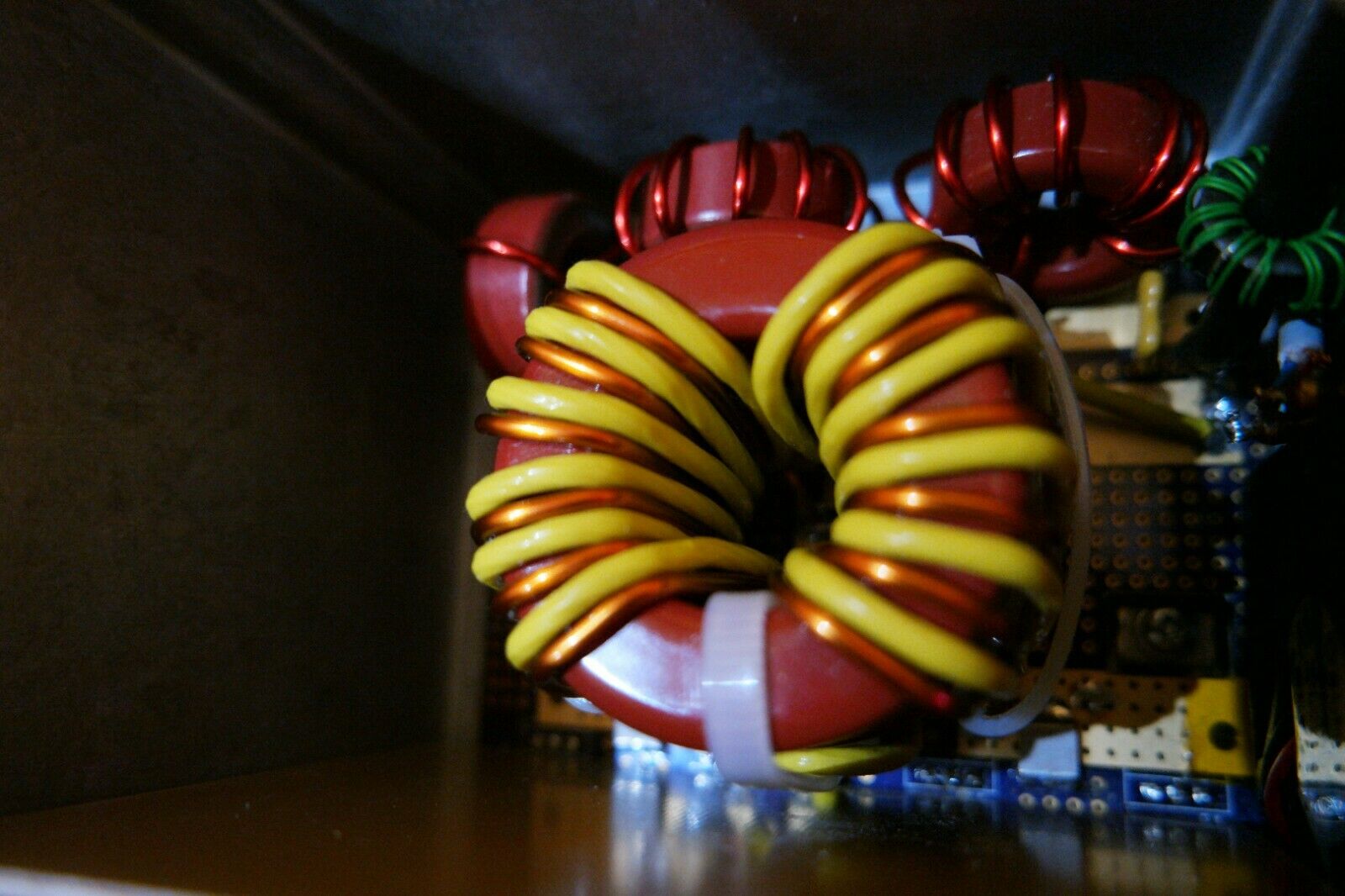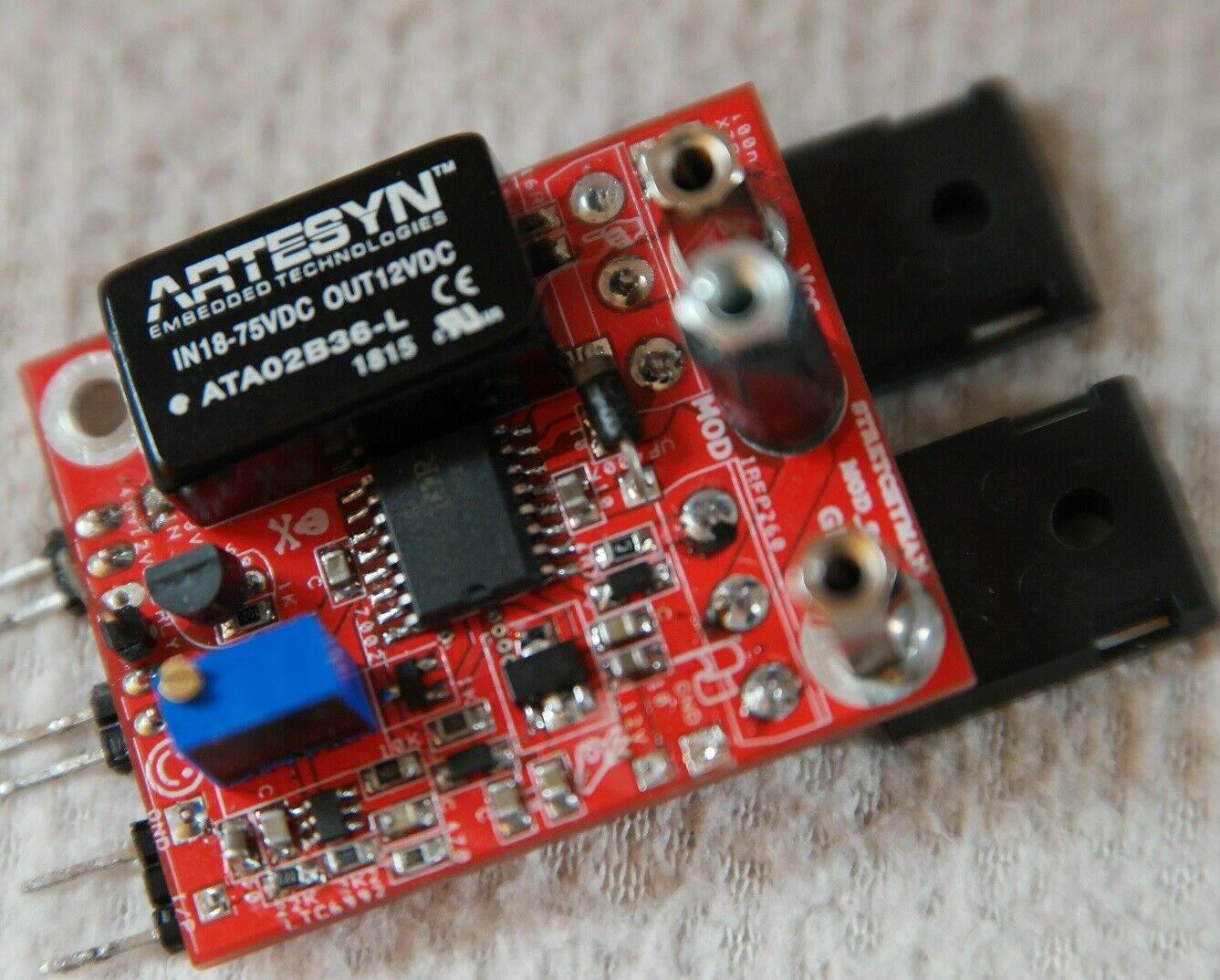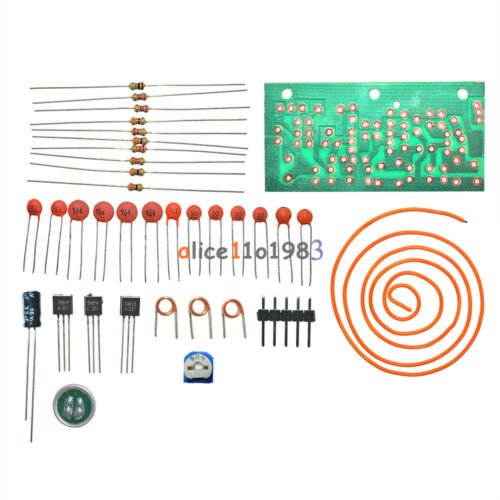-40%
100W SHORTWAVE A.M. TRANSMITTER
$ 474.67
- Description
- Size Guide
Description
The Stretchyman 100W Carrier, 400W PEP Shortwave TransmitterSpecial Edition! ONLY 25 units available.
3 years in the making! I have put my heart and soul into this design and has taken so long I’d actually given up twice, but now finally, it’s ready!
Single band 100W Quad GaN (Quad SiC if < 5MHz) RF stage with pre-programmed channels, using AD9850 DDS for optimal stability and flexibility.
The RF stage was designed for 200W but for the ultimate in reliability I’ve decided 100W is fine and enables the radio to work from a commonly available 48V 10A supply.
The Modulator is pure Class D PWM and could easily modulate way more power and uses a pair of 200V 40A FETs.
Audio input is balanced Line Level (1V) for remote use or long cable runs, can also be unbalanced.
Setting the audio level for optimum (100%) modulation is displayed via a clip indicating led.
Forward and Reverse SWR are displayed on a bargraph and any SWR>2.5:1 will disable the transmitter.
The transmitter needs 48V 10A (53V MAX), will only start up in low power mode (10W) and can then be switched into High power mode.
Any voltage >53V or SWR>2.5:1 event will immediately disable the transmitter and will need a power down to reset.
The whole design is massively over engineered and built to do way more power but decided that rugged reliability and portability were the optimum goals and hope I’ve achieved that.
If you like any more details please get in touch.
PLEASE WATCH!
https://youtu.be/Pf98INtkBeI
FULL DESCRIPTION FOLLOWS.....
Since 2016 I decided to design a build a portable efficient 100W transmitter, it has been a long journey.
Having given up twice due to lack of funds and unable to write control software I finally met someone who could understand what I needed and we got the PIC control SW written.
So, what have we got…
The design is based around a 4 FET Class E RF stage, highly efficient, hence the small size (8x5x5 inches) and light weight (5lb).
One minor disadvantage is the bandwidth the transmitter can operate over is narrow compared to older designs.
Units below 5MHz will have a Max B/W of 160KHz in 16 channels, these can be any frequencies but the Max and Min frequencies can’t be greater than 160KHz apart, if they are the power will drop off rapidly. This is less noticeable as higher frequencies so >200KHz may be achievable. However above 5MHz, noticeably around 7MHz the B/W is >500KHz and 64CH’s can be addressed. So you could have a 320KHz coverage every 5KHz, which is more than enough for a band of interest.
This design uses the latest devices from CREE (SiC) for the LF version and TRANSPHORM (GaN) for the HF version.
Having 4 devices means the design is more than capable of providing a 200W carrier but would need twice the voltage (96+) volts but would take it over and above the what is generally regarded as the maximum safe voltage for humans of 48V.Remember 100W is just the carrier level and the Output peaks at 400W PEP. For the LF version (A.M. MW) 150W is achievable with a 48V 10A supply as they can be adjusted to 53V. They will run hotter and I’m not recommending that power level for 24/7 usage but fine for a 2 hour broadcast. 100W is plenty anyway!
CHANGING FREQUENCY.
ALL designs have DIP switches and you will receive a table on what frequencies are programmed in.
Even if you have purchased a unit on a single frequency I’ve still programmed 16CHin there around the frequency you chose.
OPERATION.
I’ve made this incredibly simple to avoid any issues. On the front panel there are 2 switches the LH sw is FWD PWR (UP) and REV SWR (DOWN). In the UP position the 5 LEDs give a bargraph of relative output. In the down position ideally you will only have one (or two) LEDs lit indicating an SWR of <1.2:1. If an AMBER LED is ever lit the SWR is over 2:1 and it would be a good idea to check your antenna to get this a low as possible, try for less than 1.5:1 but realistically anything <2:1 is OK.
SEQUENCED START UP.
The RH sw is LOW POWER (UP), HIGH POWER (DOWN). The unit will ONLY start with the sw in the UP position. Power will be between 3 & 10W, this is not meant for lower power broadcasting and ONLY to check the antenna SWR. With the sw in the correct (UP) position, apply power (48V) to the unit, observing polarity, you should here the internal relay chatter and the TOP ROW of LEDs should have GREEN (ENABLE) and AMBER (5V LOGIC OK) LEDs lit. The bargraph will have one or two LEDs lit. The unit will now be TXing in LOW POWER mode. Check the SWR by flipping the LH switch down (or use an external swr meter), if ALL is good then flip the RH sw down to HIGH POWER mode. You are now transmitting a 100W carrier. OK, so far………….
AUDIO INPUT AND MODULATION LEVEL.
It’s IMPORTANT for any A.M. transmitter to have the optimum level of audio so the carrier if fully modulated to 100%. This means that the carrier will dip to zero and to twice the level when 100% is achieved. If the audio is too LOUD! Then clipping will occur and the signal will sound distorted.
How do you measure this?
Ideally with a ‘Scope but I have fitted a front panel LED to show you when that level is achieved.
With the audio pot CCW apply the audio and rotate the pot CW until the LED just starts to blink, this is the optimum level for 100% modulation. You will need 1V RMS (approx. line level) for full mod.
As with all program material the levels should NEVER exceed a maximum value, this is called LIMITING and must be done externally and should also be COMPRESSED to make it sound LOUD!
HARDWARE & PROTECTION.
The unit has two fuses. Nearest the heatsink is 600mA and below is 7A.
Voltages are monitored internally and if the voltage ever exceeds 54V the unit will shutdown and blink the second LED in the bargraph = OVLO. If the internal 12V ever drops below 11V then the third LED will blink = UVLO. ANY SWR event will blink the final RED LED in the bargraph. The unit will SHUT DOWN if ANY of these events occur. At startup if the voltage is >54V the first GREEN led will light but the unit will NOT enable (you will not hear the relay chatter and the top GREEN led will not light).
Postage is tracked and signed anywhere in the world for 3.5Kg parcel.

















